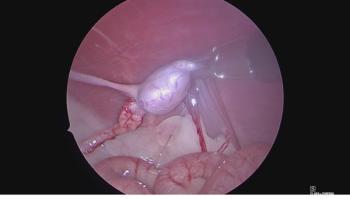
Just Ask the Expert: What blood pressure values should I be concerned about?
References vary regarding normal canine and feline blood pressure values obtained in the hospital. What numbers do you use?
Dr. Garcia welcomes internal medicine questions from veterinarians and veterinary technicians.
References vary regarding normal canine and feline blood pressure values obtained in the hospital. What numbers do you use?
A. Accurate blood pressure measurement in a veterinary clinical setting can be a challenge. Patient selection is key since the prevalence of hypertension in otherwise young, healthy animals is low.1 Hypertension has been shown to cause end-organ damage primarily in the eyes, kidney, brain, and heart (Table 1), so clinical problems in any of these organ systems should prompt an evaluation of your patient's blood pressure. In addition, evaluate blood pressure in patients that have any illness known to be associated with hypertension (Table 2) .
Table 1
The point at which hypertension will cause end-organ damage differs from patient to patient and may also depend on the degree and rapidity of the pressure changes. Overall, however, if systolic blood pressure readings are consistently > 160 mm Hg over three or four consecutive measurements, further investigation is warranted. Treatment depends on the presence or resolution of any underlying disease.
Table 2
INDIRECT MEASUREMENT
The oscillometric and Doppler-ultrasonic methods are commonly used to indirectly measure blood pressure in a veterinary practice.
Oscillometric method
The device detects oscillations in the blood vessel wall during occlusion with an inflatable cuff, and the point of maximal oscillation is recorded as the mean arterial pressure (MAP). Systolic and diastolic values are then calculated from the MAP. This method tends to be more accurate in dogs than it is in cats.2
Doppler-ultrasonic (sphygmomanometry)
Blood flow is detected by using a piezoelectric crystal, and the peripheral vessel is occluded by using an inflatable cuff. The systolic pressure is read as the level at which the signal is heard again once the cuff is deflated. It is considered to be the most accurate method to use in conscious cats.3
TIPS FOR CONSISTENT MEASUREMENTS
To obtain reliable and repeatable blood pressure measurements with either method, multiple factors must be considered.
- The operator should be well-versed in how to use the machine, how and where to place the cuff, and how to position the patient. A standardized protocol is a must.
- Ideally, the cuff should measure 40% of the appendage circumference in dogs and 30% in cats.4
- The patient should be acclimated in a quiet room for at least 10 minutes before measuring its pressure. In addition, it is often helpful to have the owner present.
- Obtain at least three or four consecutive, consistent measurements.
- Record blood pressure values, cuff size, and cuff location in the patient record for future reference.
Jennifer L. Garcia, DVM, DACVIM, is a veterinary internal medicine consultant in Houston, Texas.
Jennifer L. Garcia
REFERENCES
1. Bodey AR, Michell AR. Epidemiological study of blood pressure in domestic dogs. J Small Anim Pract 1996;37:116-125.
2. Acierno MJ, Seaton D, Mitchell MA, et al. Agreement between directly measured blood pressure and pressures obtained with three veterinary-specific oscillometric units in cats. J Am Vet Med Assoc 2010;237(4):402-406.
3. Jepson RE, Hartley V, Mendl M, et al. A comparison of CAT Doppler and oscillometric Memoprint machines for non-invasive blood pressure measurement in conscious cats. J Feline Med Surg 2005;7(3):147-152.
4. Stepien, RL. Diagnostic blood pressure measurement. In: Ettinger S, Feldman E, eds. Textbook of veterinary internal medicine. 7th ed. St. Louis, Mo.: Saunders, 2010;398-402.
Newsletter
From exam room tips to practice management insights, get trusted veterinary news delivered straight to your inbox—subscribe to dvm360.




